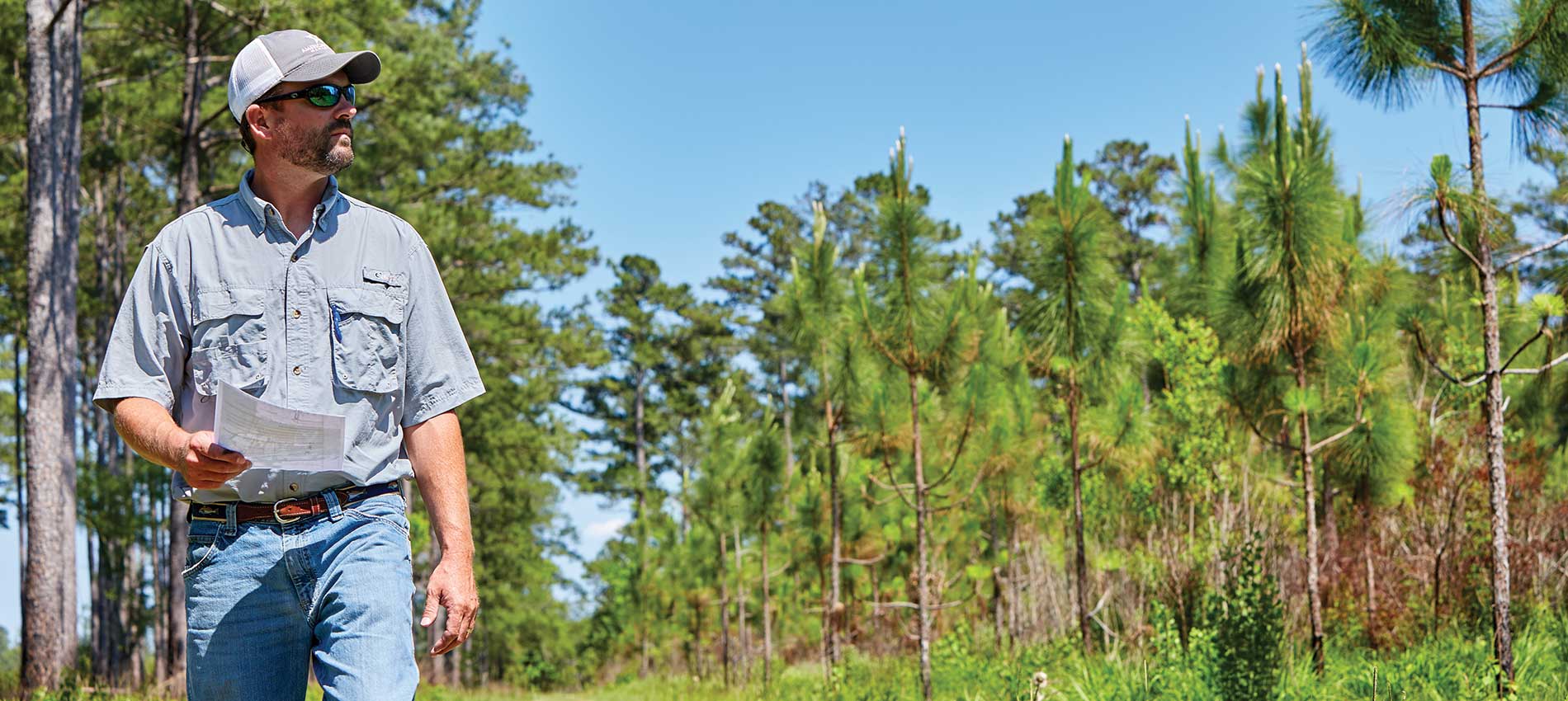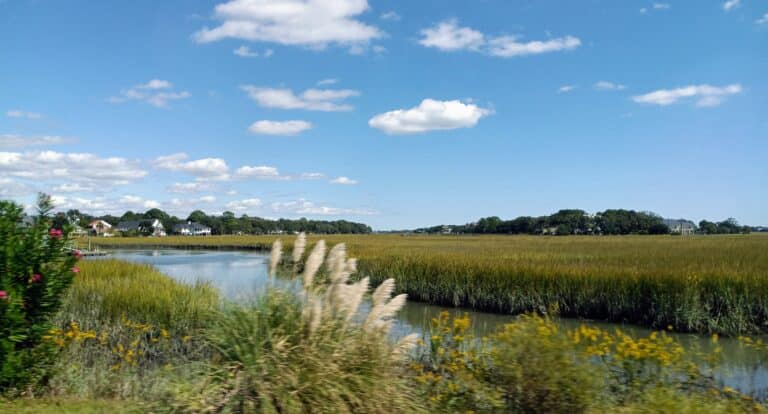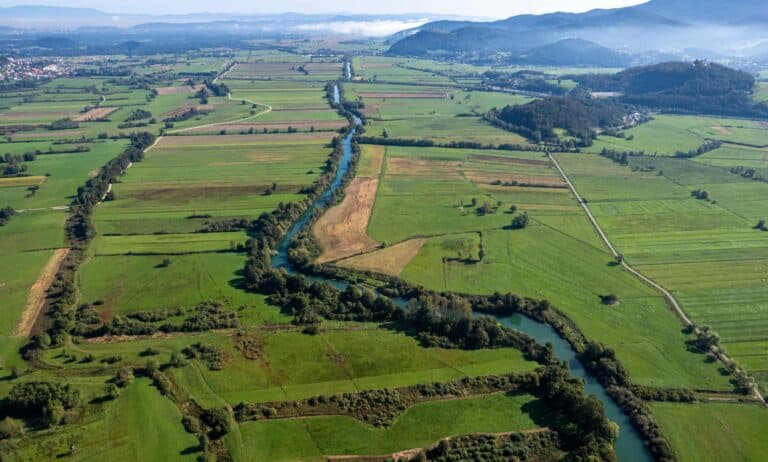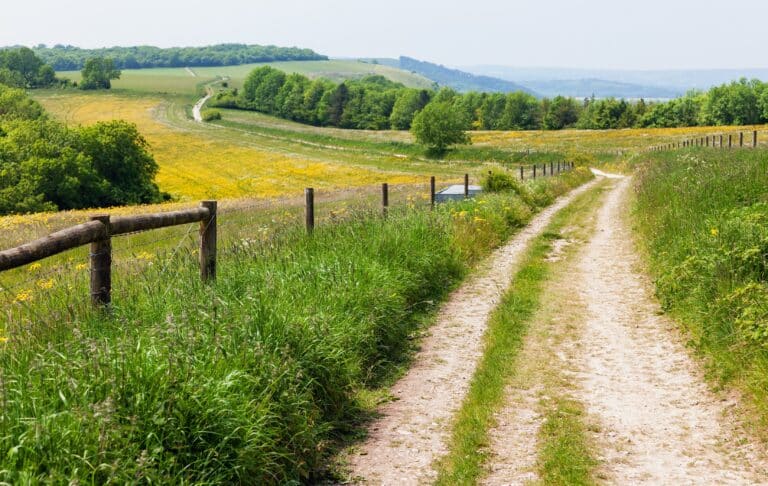American Forest Management was born out of a passion for land and a desire to work with landowners. In fact, our company tagline is “We’re in this Together” because we know our work is all about relationships—the relationships between land utilization and conservation, the relationship between the landowner and property, and ultimately, the relationship between American Forest Management and the clients we serve.
Our company tagline is ‘We’re in this Together’ because we know our work is all about relationships
South Carolina is our company’s birthplace and the perfect location to start a forestry consulting business. American Forest Management (AFM) was founded in 1966 in the central South Carolina City of Sumter by Bartow S. Shaw, Jr., to provide consulting services for private forest landowners. For over 50 years, the company has been fortunate to grow from a one-man firm to over 265 employees that now assists landowners across the country in 17 states from 49 offices. American Forest Management offers land, wildlife and timber management, recreational licensing, and real estate services. We operate in virtually every major timber-producing region in the United States, collectively managing over 6.5 million acres of land for our clients. Our company culture remains connected to those local communities in which we operate and the individuals who own the land.
The diversity of South Carolina
Land, forests, and the forest industry are a significant part of South Carolina’s economy. Over 67% of the state’s total land area is covered in forests. The forestry sector provides over 84,000 jobs to South Carolinians and has an economic impact of $21 billion annually. Timber is South Carolina’s top harvested crop, and the state continues to grow more wood volume than it harvests each year. The state is home to over 140 manufacturing facilities of forest products, including 75 lumber mills, 15 plywood mills, 8 pulp and paper mills, 10 chip mills, 5 pole producers, 3 oriented strand board (OSB) plants, the balance being fuel, pellet, and other facilities. South Carolina has the resource as well as a healthy network of markets to utilize the resource, which is critical to support land values and landowner returns over the long term.
Find South Carolina timberland for sale on LandWatch
South Carolina is an active real estate market for our company as it offers quality soil and climate for agriculture, timber and competitive forest products markets for forest investment. Of course, it is also a great place to live. At American Forest Management, we have buyers from all over the country who are looking to relocate and own acreage in the state because the area has a rich history, coastal areas and excellent recreation options including high-quality hunting, and equestrian uses.
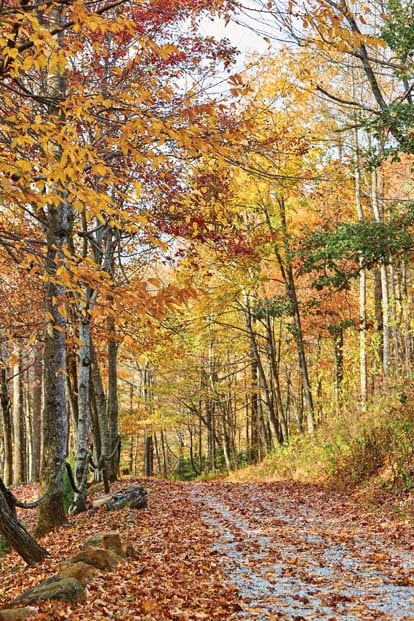 Autumn is a great time to visit South Carolina, as its diverse regional landscapes provide ample opportunities to enjoy scenic outdoor excursions. It’s the time when fall’s sunny days and chilly nights transform the trees from green to a blend of oranges, reds, golds and pinks. This color change is actually triggered by decreased day length rather than weather or temperature as one might expect. The shorter days trigger deciduous plants to stop producing chlorophyll, the green substance that absorbs sunlight and creates energy for the plant to grow. As the chlorophyll is absorbed back into the plant to store every last bit of energy in preparation for the winter, it exposes the underlying pigments which produce those vibrant fall colors. The vibrancy and duration of those colors do depend on the weather leading up to and during the fall, in general we have about 2 weeks of peak color to enjoy each year.
Autumn is a great time to visit South Carolina, as its diverse regional landscapes provide ample opportunities to enjoy scenic outdoor excursions. It’s the time when fall’s sunny days and chilly nights transform the trees from green to a blend of oranges, reds, golds and pinks. This color change is actually triggered by decreased day length rather than weather or temperature as one might expect. The shorter days trigger deciduous plants to stop producing chlorophyll, the green substance that absorbs sunlight and creates energy for the plant to grow. As the chlorophyll is absorbed back into the plant to store every last bit of energy in preparation for the winter, it exposes the underlying pigments which produce those vibrant fall colors. The vibrancy and duration of those colors do depend on the weather leading up to and during the fall, in general we have about 2 weeks of peak color to enjoy each year.
South Carolina is divided into three geographic regions—the Coastal Plain, the Midlands, and the Upstate. The Coastal Plain, also referred to as the Low Country by the locals, stretches from the popular Myrtle Beach area down the coastline to Hilton Head Island. The Coastal Plain is most widely recognized for their white-sand beaches and fishing villages but is also home to historic rice and cotton plantations. These plantations provide historic beauty, agriculture, and many of those lands now grow and produce pine timber.
The ACE Basin area south of Charleston represents one of the largest undeveloped estuaries on the east coast of the US. The ACE acronym comes from the Ashepoo, Combahee, and South Edisto River which all converge in this area. This area contains pine and hardwood uplands, forest wetlands, fresh, brackish, and salt-water marshes, barrier islands, and beaches. The Nature Conservancy designated the area one of “The Last Great Places” because of its importance. It is one of the most highly sought-after birding destinations in the world, which is now one of the top national outdoor pastimes.
The Midlands Region is located in the center of the state and includes the state capital, Columbia, home to the University of South Carolina. The Midlands have a strong agricultural and industrial presence along the highly connective interstate network that includes I-20, I-26, I-77 and I-95. An amazing location in the Midlands to enjoy fall and the outdoors is the Congaree National Park, just outside of Columbia in Hopkins, SC. The Congaree is the largest intact expanse of old growth bottomland hardwood forest in the southeastern United States. It is home to some incredibly large old growth trees that can be easily viewed from raised boardwalks through the forest. The park features 25 champion trees that are the largest of their species in the country and the highest concentration of these large trees anywhere.
The Upstate, or Up Country region transitions from the rolling hills of the Midlands up to the Blue Ridge Mountains along the North Carolina and Georgia border. This area is most densely populated from the Rock Hill area just below Charlotte, NC to Greenville, SC. Greenville has recently experienced explosive growth, as it is home to a large BMW car manufacturing facility and Clemson University.
A great way to view the tree foliage in the upstate is by taking a drive along SC Highway 11 also known as the Cherokee Foothills Scenic National Byway, which extends over 100 miles from Gaffney all the way around to Lake Hartwell on the Georgia border.
The Upstate includes the counties located at the foothills of the Blue Ridge Mountains, which are beautifully spotted with vibrant foliage in the fall. Foliage color typically peaks around the last week of October in the higher elevations and continues into the first week of November. A great way to view the tree foliage in the upstate is by taking a drive along SC Highway 11 also known as the Cherokee Foothills Scenic National Byway, which extends over 100 miles from Gaffney all the way around to Lake Hartwell on the Georgia border.
“All three regions of South Carolina have a lot to offer those who own, or are looking to own property,” Chris Miller said. “From the natural landscape, mild climate, quality jobs, events, rich history, and low cost of living, it has all the ingredients of a great place to own land.”
Of our forty-nine total offices, seven are located in South Carolina, so we can serve landowners throughout the state.
Find South Carolina timberland for sale on Lands of America
We’re in this for the land. We’re in this for the people.
Our company strives to provide solutions for any natural resources or land-related need a landowner may encounter. AFM’s primary service is land management, which includes planning, timber inventory, reforestation, and silvicultural activities. Silviculture is the growing and cultivation of trees, similar to agriculture being the growing and cultivation of food crops. Silvicultural activities include tree planting, herbicide applications, mechanical site preparation, and fertilization. Our planning group takes the data from the forest and uses that to project growth, harvest times, cash flows, and expenses. All of this information can be incorporated into a comprehensive plan that guides the landowner in the management of their forest to help them accomplish their objectives and make good business decisions.
Our forestry advice is based on science, and our employees are professionals with broad backgrounds and experience. We are members of numerous research co-operatives at universities within our footprint to ensure our clients get the most accurate information. For example, through our membership in the Tree Improvement Cooperative at NC State University, our clients have access to their genetics database. This database assists us in selecting the best possible tree genetics for planting on their property. Certain genetic families within a species have more favorable characteristics, like tree form or growth, than others and we can select what to plant based on our clients’ long-term objectives for their property.
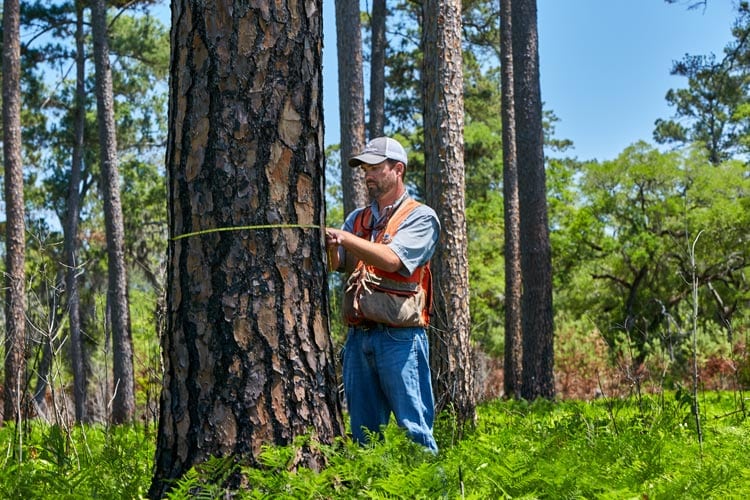
One of the most critical times for a landowner is when they sell timber—whether it’s a final harvest when mature, or an intermediate thinning. Most landowners only have the opportunity to sell timber once or twice in their lifetime, as it can take 30 years or more for a stand to mature. This makes it difficult for a landowner to know what their timber is worth at the time of sale, or how to best market it. Unfortunately, landowners can be taken advantage of by being advised to sell at the wrong time or at a below-market price. It is wise to have an advocate working with you, on your side, to assist in confirming the harvest is set up properly to comply with your desires and best management practices, completing a pre-sale appraisal so you know what to expect from the sale, and ensuring the land is marketed properly and at the right time to realize the highest return to the landowner on a competitive basis. We can offer this service and peace of mind to our clients because we’re involved in the market on a weekly basis and handle multiple sales. Therefore, we have access to up-to-date information that would be impossible for an individual to obtain on their own.
“Another highly critical time is when individuals buy or sell their land. We have a dedicated team of land agents in our local offices to assist current and future owners of rural real estate,” said Tom Margo, director of Investment Services. “Our team of agents have forestry, farming, and wildlife backgrounds so they understand how to work with sellers to present their property in the best view and how to find what a particular client is searching for in a purchase.”
AFM’s land agents benefit from the support of our other service groups, which is a major asset to our sales staff and their clients. Clients benefit from their agents’ access to all of our in-house experts and company resources. Our agents can get advice from foresters on a tracts’ timber value and wildlife biologist on a tracts’ habitat or game populations. Our appraisal staff can provide them with comparable sale information to help form quality price opinions. Our forest planners can help them with harvest schedules and cash flow projections. Our GIS and mapping department can provide maps of the land and our in-house marketing staff can help them present the properties favorably to the public. This depth of service and expertise is hard to match in the marketplace.
Relationships
Our business is sustained through long-term relationships. We are proud to have managed properties through multiple rotations of timber and ownerships, and we even have current clients that are the third-generation owner of their family land.
One of our long-time clients said it well: “We view American Forest Management as an extension of our own company. They are our boots on the ground—making sure our land is properly cared for and that we have a proper accounting of our land asset. When it comes time to sell timber or land, AFM ensures the marketing occurs properly and the highest price is realized. They have the experience and relationships within their local offices across the nation to make sure the best contractors are utilized, and the best practices are deployed, which leads to superior results for us (the landowner).”
Our goal is to be there when our clients buy land, manage their land so it meets their needs while they own, and, if they choose to sell, find another steward to continue in their legacy. In our business, the joy in our work is our relationships with the people that own the land. We truly believe we are in it together with landowners throughout the years, and we cannot succeed in the long term unless our clients succeed as well.
About the Author: Serving as Carolinas Real Estate Operations manager with American Forest Management, Inc., Chris Miller has 16 years of combined forestry and land brokerage experience. His focus is oversight of the land brokerage staff in the North Carolina and South Carolina offices and assisting area landowners with the management, acquisition and disposition of their forestland and farms. Chris holds a Bachelor of Science in forest management from North Carolina State University, he is a North and South Carolina registered forester and a licensed real estate broker in North Carolina and South Carolina. He carries the esteemed Accredited Land Consultant (ALC) credential with the Realtors Land Institute.
About American Forest Management: American Forest Management has helped landowners manage, sell, buy, improve and enjoy millions of acres of land for over 50 years. They remain keenly focused on their vision of making ownership more rewarding by helping people explore the full potential of their land. Find out more: AmericanForestManagement.com
